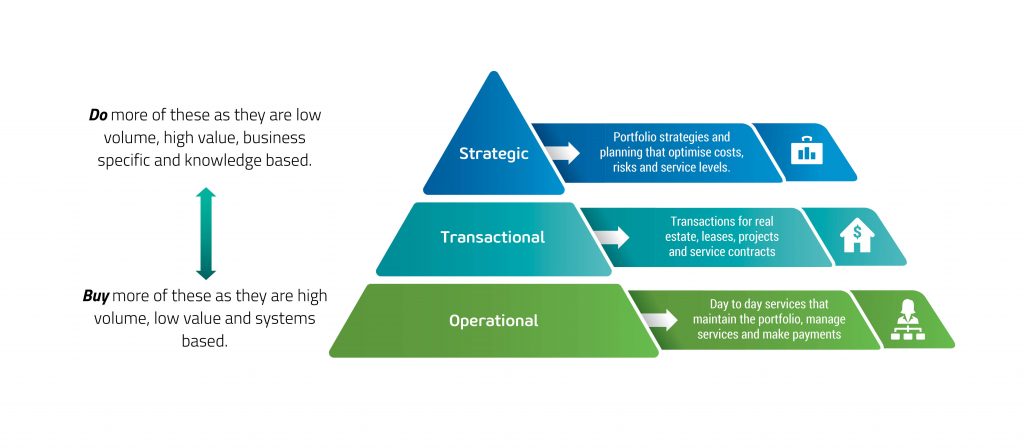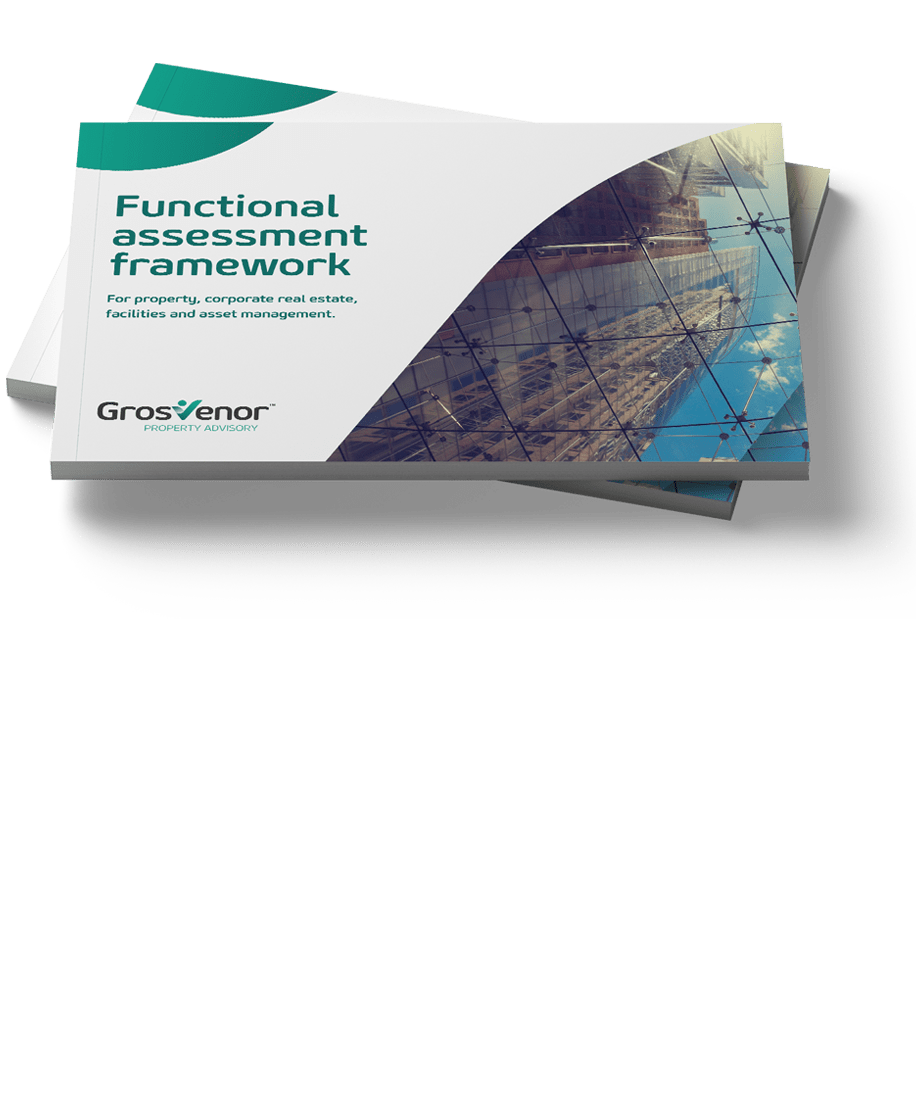Want to outsource your corporate real estate?

You’re not alone. It’s common practice, but you do need to know what you’re doing.
First up, let’s get some definitions out of the way so we’re clear we’re talking about the same thing.
What is corporate real estate?
Corporate real estate refers to all property that is managed for non-investment purposes; this includes both public and private sector. It is the accommodation and assets that organisations use – both leased and owned – to deliver services to the core business.
What kind of services can be outsourced?
The contracting out of services, including cleaning and maintenance services, the engagement of project managers to deliver capital works and the engagement of brokerage firms and real estate agents are some of the main outsourced services. In addition to these tasks, it is possible to outsource end-to-end outcomes, including the management of subcontractors and the management of data and financial transactions.
How do you know when to outsource?
The decision on timing has more to do with organisational readiness than anything to do with the property function of an organisation.
The ability to get internal support for the change is essential and should be the first gateway to decisions about outsourcing.
This support is often easier to muster during periods of significant organisational change, including mergers and acquisitions, or through a major property change, including shifting locations for organisations or a major restructure of operational business units.
Line up the ducks
Before you begin to outsource you need to make sure your organisation is fully prepared. Your ducks need to be in order.
Consider this:
- Does your organisation have the appropriate internal support?
- Is your organisation capable of making the change? Although the beginning of the financial year might seem a great time to commence a new outsourcing model this is also a time when organisations are often heavily focused on budget preparation and business-as-usual outcomes. Our general advice is to plan the transition for a traditionally quiet part of the organisation’s business cycle, or at the end of an otherwise busy part of the business cycle.
- Has your organisation aligned the change to corporate strategy? This strategy could be to cut costs, or to improve customer outcomes, or some other corporate objective to which outsourcing can add value.
How long is a piece of string?
You’ll be pleased to know that it is possible to provide fairly accurate estimations of the time required to implement an outsourcing strategy for your business.
End-to-end, the process from business case to completion of transition can be done in as little as nine to 12 months.
However, we would recommend clients consider 18 months as a reasonable timeframe.
Break it down
Minimum time frames for each phase are as follows:
- Phase 1 – Development of business case and justification for change – one month
- Phase 2 – Documentation of outsourcing requirements, including specification, pricing, structure and performance framework – one month
- Phase 3 – Tendering an evaluation of tendered responses – three months
- Phase 4 – Negotiation of final terms and requirements – one month
- Phase 5 – Mobilisation and transition of services – three months
- Phase 6 – Measuring the benefits – ongoing.
While all end-to-end, this is only nine months, an additional three months should be allowed for internal approvals and to gain support for the change.
Again, this is the shortest possible timeframe that outsourcing can be achieved, and we would generally recommend an 18-month period to ensure appropriate engagement and support for the change is obtained.
A closer look
While there are no hard and fast rules around what to outsource, there is a framework that should be used as part of any consideration.

In the diagram above, we have highlighted the basic concept of assessing property services as strategic, the transactional and operational services. As a general rule, the more operational a task or service, the more value that an external service provider can deliver through aggregation and the use of systems.
Transactional services can also be value-added by an external service provider, provided the organisation can manage and measure the value created and the transactions do not require a substantial strategic input from the organisation (i.e. the transactions are relatively straightforward market-based transactions).
Operational services are high volume, low value and are most able to be outsourced as they can be standardised and aggregated by a provider to level scale economies.
Be Prepared for the internal change
The biggest mistake we see in outsourcing is the failure of organisations to understand and plan for the extent of change that is required when operational services and transactional services are outsourced.
When planning an outsource contract, it is essential to design the internal functions that will manage and measure the service provider and provide the necessary linkages back into internal customers.
Too often, organisations retain an element of their residual internal structure, which results in a lack of clarity between the internal team and outsourced provider. It can also result in competition between the internal resources and the outsourced provider for demonstrating who adds the most value.
Internal functions should be redesigned around service delivery management, performance management, best practice and the management of internal relationships.
Finally, internal resources should be focused on strategic, portfolio and customer issues and the interpretation of client needs into instructions provided to their outsource provider.
Wrap Up
When considering when and what to outsource, organisations should:
- Ensure organisational support and readiness for the change, including, wherever possible, a senior executive sponsor or champion for the change process;
- Develop a solid business case and articulate the measures of success and be prepared to measure the outsource value-add as part of the change process;
- Align the change with internal corporate strategy, and demonstrate how the outsourcing will add to or support other corporate goals or strategies; and
- Be prepared to change internal structures to manage the outsource relationship, measure performance and bridge the connection between organisational strategy and instructions provided to the service provider.









 We are all about sharing our expertise to help you and your organisation be the best it can be.
We are all about sharing our expertise to help you and your organisation be the best it can be.